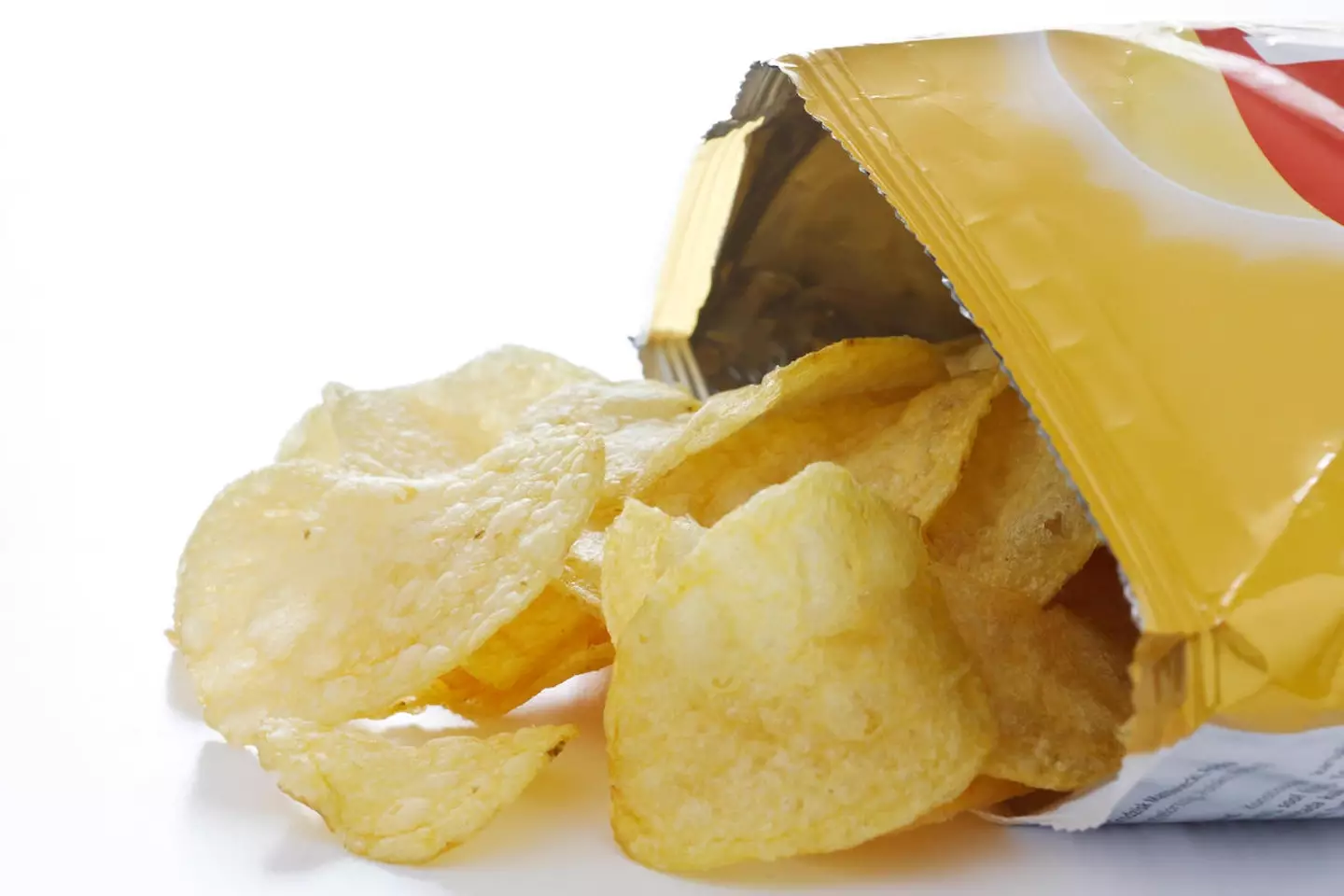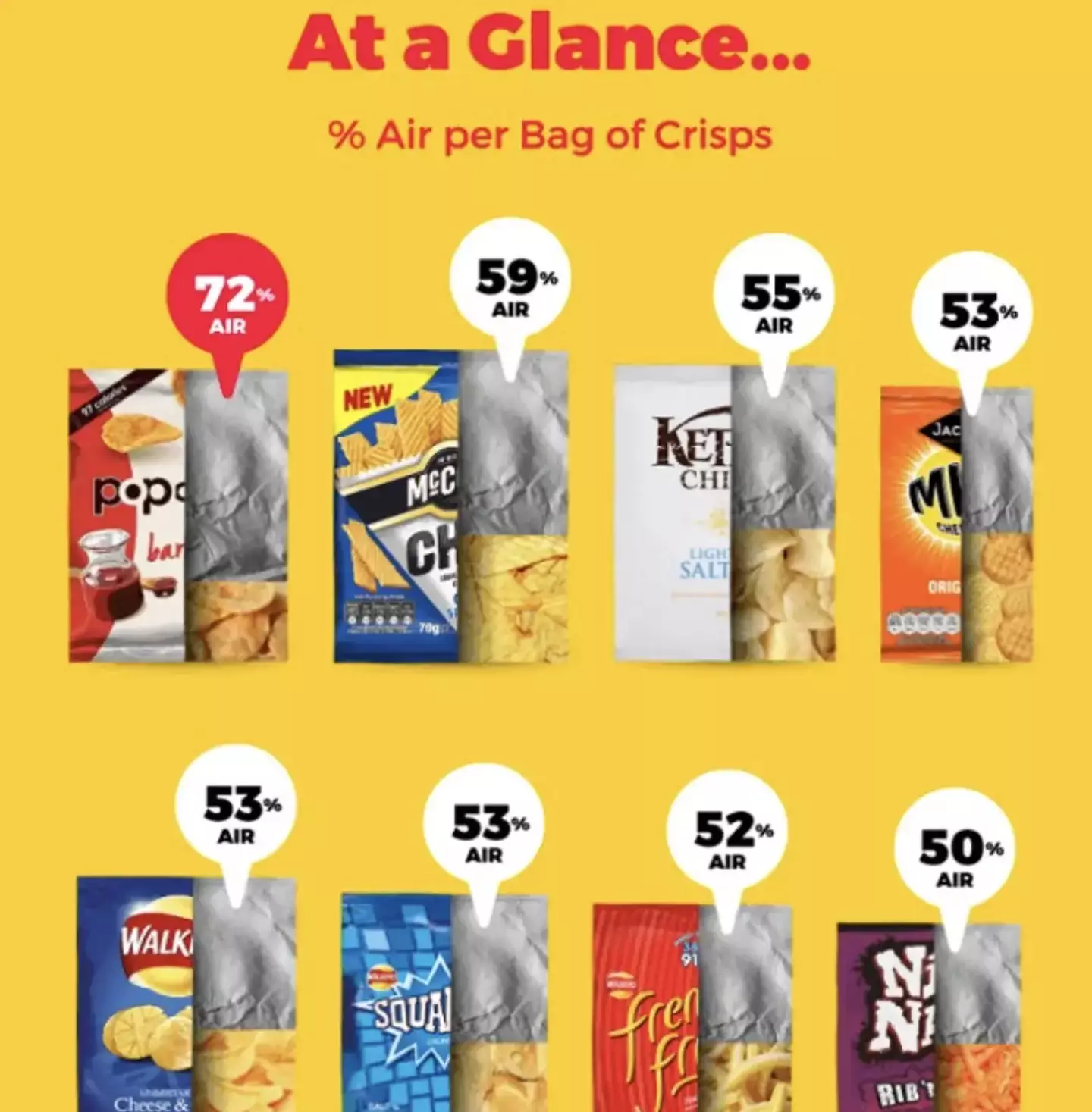
You've been waiting all morning for that £3.40 meal deal. The sarnie, drink and a snack combo will keep you going through the afternoon and that snack of choice always has to be a bag of crisps.
That lunchtime classic soon feels like a rip off if you end up with an over-inflated bag though, opening it up to reveal half a packet.
Well, we're not sure if this will make you feel any better, but there is a pretty reasonable explanation as to why this is the case.
Advert
It turns out that crisp packets aren't just inflated to make them look more full.
There's actually a name for it too and it's called 'functional slack-fill'.

The method of inflating them is widely accepted by organisation standards and there's certain categories that need filling for it to be classed as 'functional'.
Advert
The main reason behind it is to actually protect the food in the package, which kinda makes sense.
The packets contain nitrogen, which helps protect the crisps from getting completely crushed, while also retaining freshness.
As well as protecting the contents of the packaging, slack-fill can also be classed as 'unavoidable'.
If the machinery that makes the packaging is built it such a way, it's allowed to still be called 'functional', according to packagingschool.com.
Advert
Sometimes the inflation is needed 'for the package to perform a specific function' or if the package has a certain value attached to it, you have to protect the goods inside.
Also there are instances where a minimum package size is required just to fit all the labelling on it.

When it comes to specific crisps, however, the Walkers website, states: "Our packets of crisps are filled by weight. You should always find that the packets weigh the grammage stated on the packet.
Advert
"However, there is a very good reason for the packets not being filled right to the top. Crisps are very fragile and can get crushed very easily.
"To try and prevent this from happening, we put air in the packs before they are sealed to act as a cushion for the product during transit. This does mean that the packets have to be a bit bigger than the contents."
In 2017, CDA Appliances decided to delve deep into the amount of air in crisp packets, and the study found a huge range of difference in the amount of air in each brand's crisps bags.
At the top end, Popchips were found to be 72 percent air, while at the other end of the scale, Wotsits came in at 18 percent.
Advert
Across the 15 different products sampled, the average air content came in at 54 percent, but with such a great range you can't help but feel a bit sceptical about how science-centred the decision-making behind this is.
Artist Henry Hargreaves carried out similar research in 2015, and beyond the infuriation caused by opening a surprisingly empty packet of crisps, he criticised the 'big carbon footprint' that could be created by unnecessarily inflated crisp packets.

Responding to the CDA investigation, a spokesperson for The Snack, Nut and Crisp Manufacturers Association said manufacturers are required to minimise excess packaging.
They said: "In addition to preventing staleness, the inserted gas also provides the added benefit of creating a cushioning effect to protect the fragile contents of a packet from damage.
"The packaging expands or contracts depending on the ambient temperature, whereby the gas present in the pack will fill a larger volume when it's hotter, and a smaller volume when it's cooler.
"For this reason, the packaging is required to be of a certain size to accommodate the potential expansion of the gas. UK manufacturers are legally governed by Packaging Essential Requirements to minimise excess packaging and can be challenged legally to justify packs which are larger than 'best in class'."
Featured Image Credit: martin berry/Warren Bourne/Alamy Stock PhotoTopics: Food And Drink